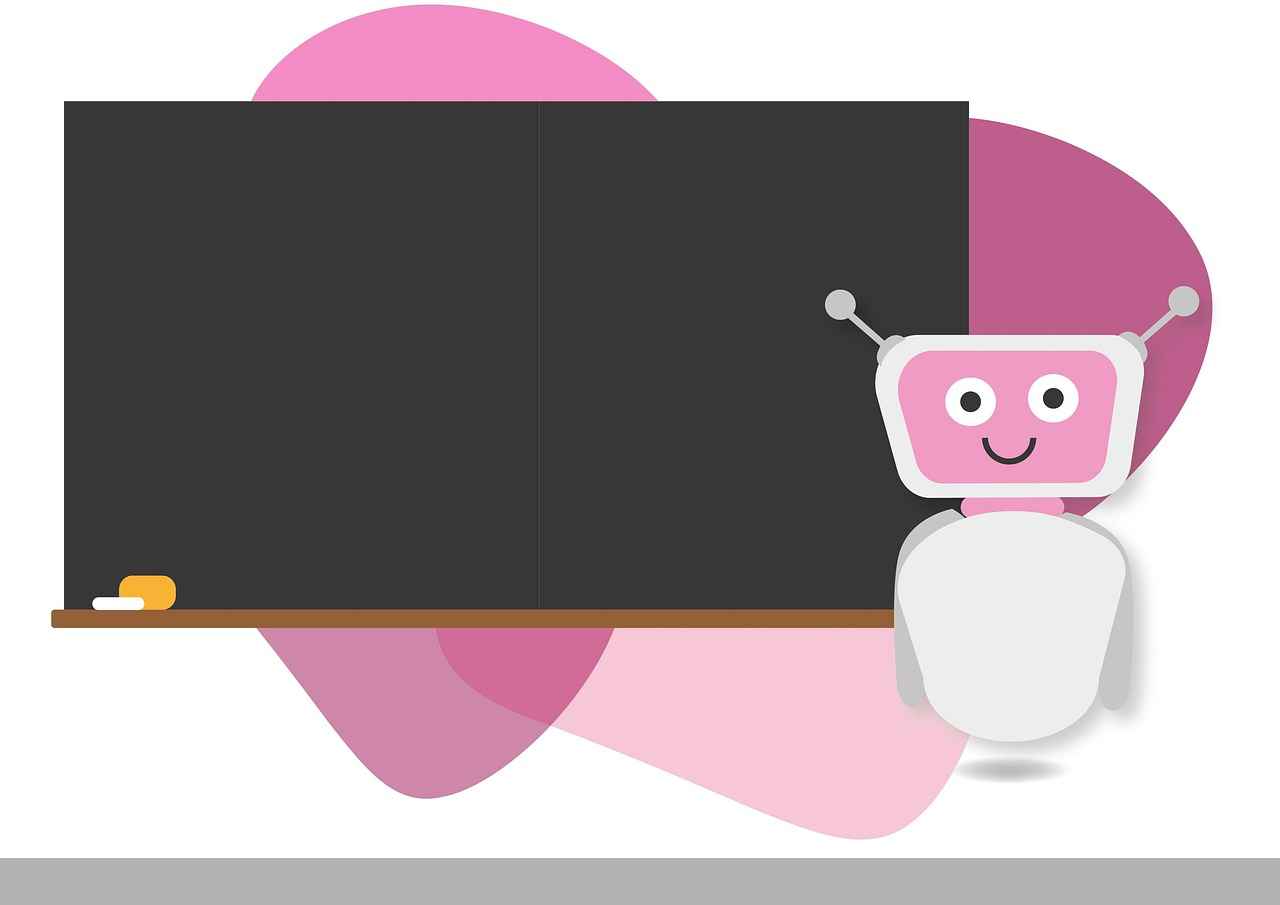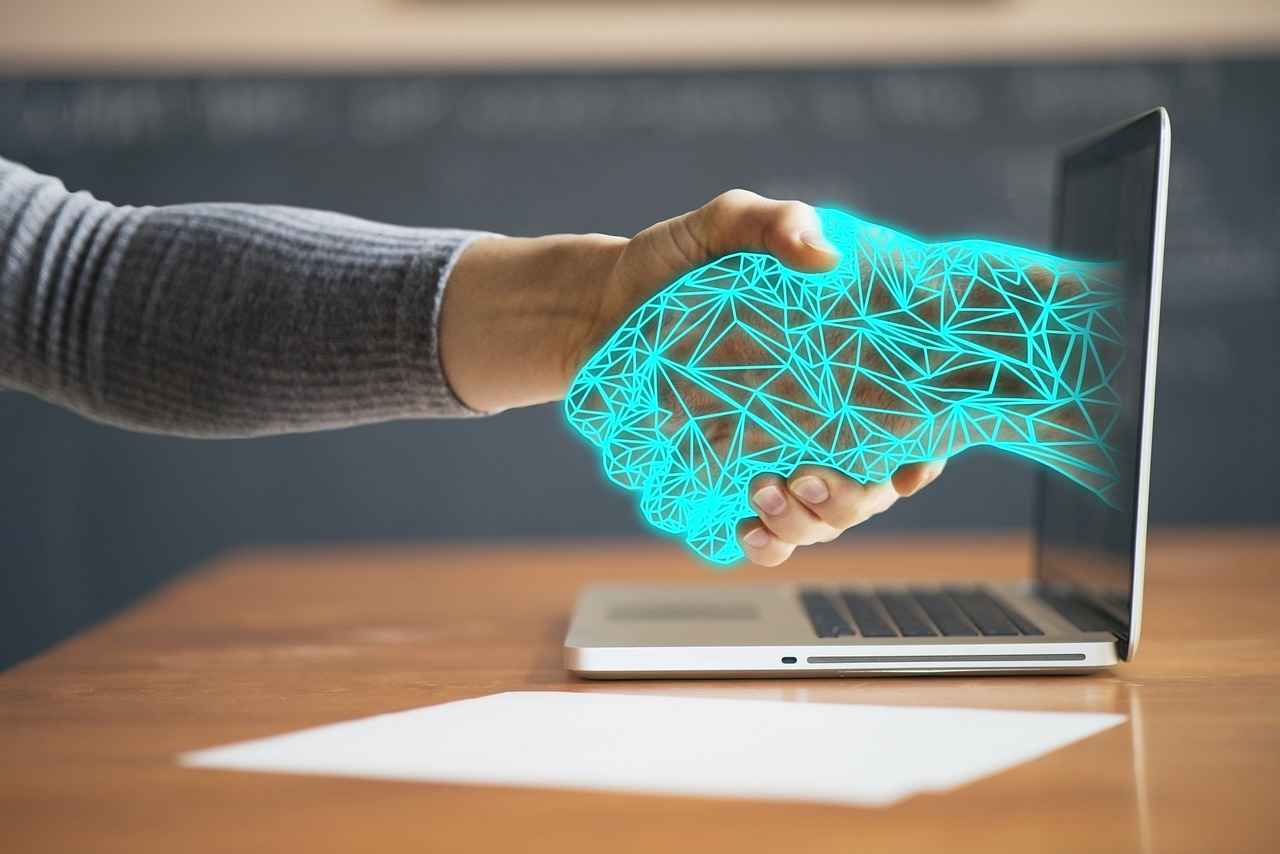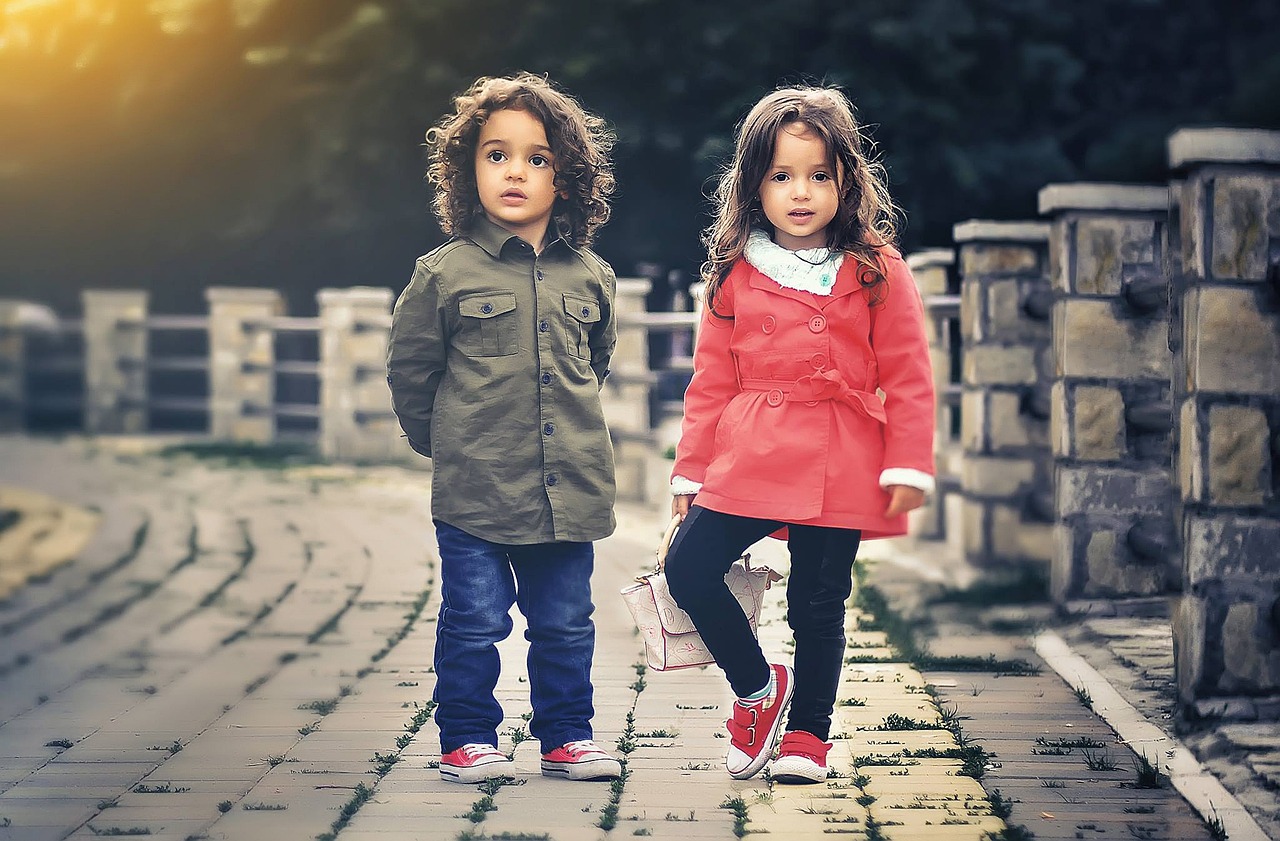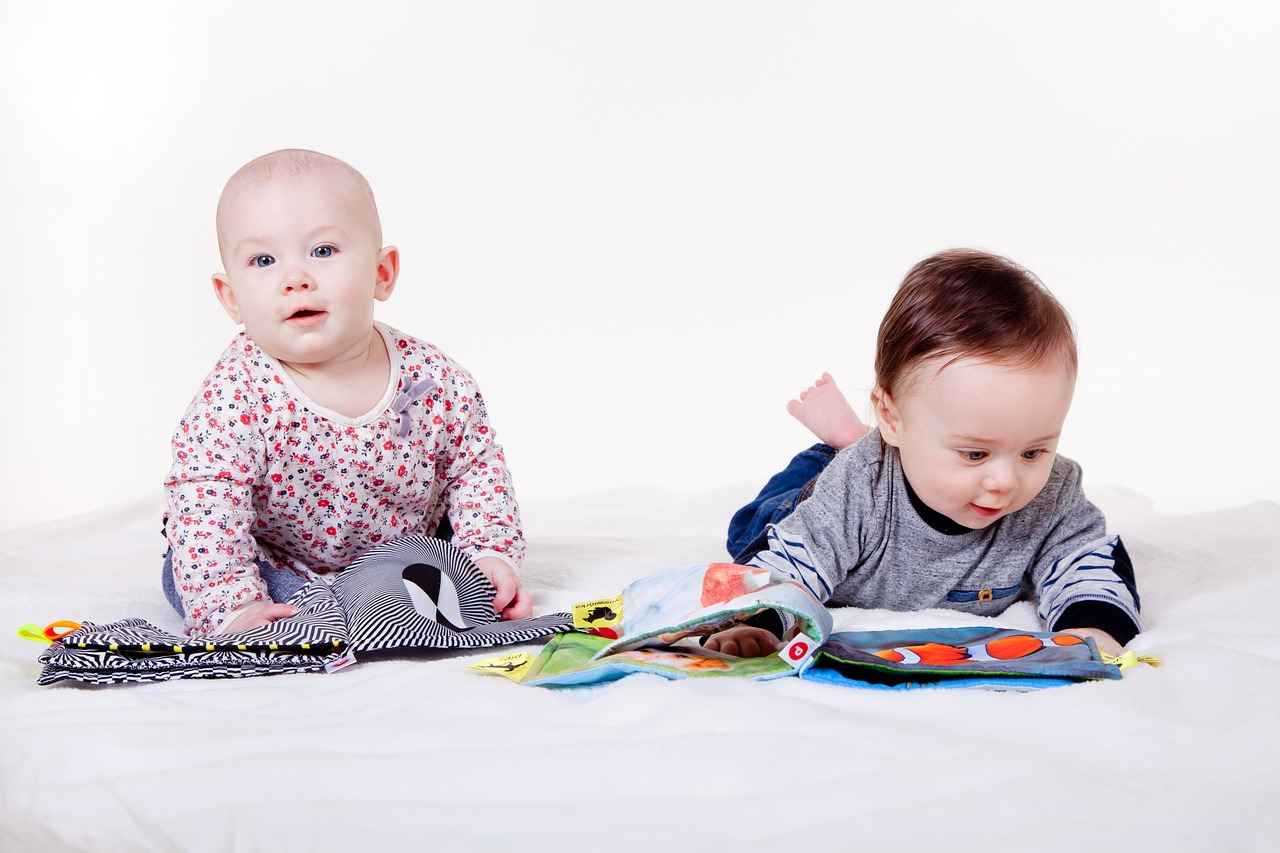Step into the exciting world of robot-themed movies designed for children, where imagination meets technology! These films not only entertain but also inspire creativity and curiosity about the fascinating realm of artificial intelligence. This article explores various movies, their themes, and the character traits that make them memorable.
1. The Importance of Robot Movies in Children’s Development
Robot movies play a crucial role in fostering creativity, critical thinking, and problem-solving skills in children. By presenting complex themes in a fun and engaging manner, these films resonate with young audiences and encourage them to explore new ideas.
2. Top Robot Movies for Kids
- Big Hero 6: Featuring the lovable healthcare companion robot, Baymax, this film teaches valuable lessons about friendship, loss, and the significance of technology in healthcare.
- WALL-E: A touching story of a waste-collecting robot that promotes environmentalism and love, encouraging children to care for their planet.
3. Understanding Artificial Intelligence in Movies
In children’s movies, artificial intelligence is often simplified, making it accessible while sparking curiosity about technology. This approach helps demystify complex concepts for young viewers.
4. Themes Commonly Found in Robot Movies
- Friendship Between Humans and Robots: These films often highlight the bonds that form between human characters and robots, emphasizing empathy and understanding.
- Overcoming Adversity: Many robot movies depict characters facing challenges, teaching kids about resilience and perseverance.
5. Educational Value of Robot Movies
Robot movies can serve as effective educational tools, introducing children to STEM concepts, ethics in technology, and the importance of teamwork.
6. Future of Robot Movies for Kids
The landscape of children’s cinema is evolving, with advancements in technology leading to more innovative and engaging robot films that captivate young audiences.
7. Conclusion: The Lasting Impact of Robot Movies
Robot movies not only entertain but also educate and inspire children, leaving a lasting impression that shapes their understanding of technology and relationships.

1. The Importance of Robot Movies in Children’s Development
Robot movies play a pivotal role in children’s development by nurturing essential skills such as creativity, critical thinking, and problem-solving. These films often present intricate themes in a manner that captivates young viewers, making complex ideas more accessible and engaging.
By immersing children in fantastical worlds where robots take center stage, these movies spark their imagination. For instance, when children watch a robot navigate challenges and form friendships, they are encouraged to think outside the box and envision solutions to problems. This kind of storytelling not only entertains but also inspires kids to explore their own creative potential.
Moreover, robot movies often introduce themes of friendship and collaboration. As characters team up with robots to overcome obstacles, children learn the value of teamwork and empathy. They see firsthand how diverse perspectives can lead to innovative solutions, thus fostering a sense of community and cooperation.
Another significant aspect is the way these films address ethical dilemmas related to technology. By presenting scenarios where robots and humans interact, children are prompted to think critically about the implications of artificial intelligence and technology in their lives. This encourages them to develop a nuanced understanding of the world around them.
In summary, robot movies are more than just entertainment; they are valuable tools for educational growth. By engaging children with relatable characters and thought-provoking themes, these films help cultivate essential life skills that will benefit them in various aspects of their lives.

2. Top Robot Movies for Kids
Top Robot Movies for Kids
Robot-themed movies have a unique way of captivating young audiences, blending adventure with valuable life lessons. Below is a curated list of some of the best robot movies suitable for children, each with its own unique storyline and memorable characters that impart essential values.
- Big Hero 6
This animated film follows the journey of Hiro Hamada, a young robotics prodigy, and his inflatable healthcare companion, Baymax. Together, they navigate themes of friendship, loss, and the significance of technology in healthcare. The film teaches children about the importance of helping others and the power of teamwork.
- WALL-E
Set in a future where Earth is abandoned, this heartwarming tale features WALL-E, a waste-collecting robot. Through his adventures, children learn about environmentalism and the value of love and companionship. The film encourages kids to take care of their planet and highlights the importance of responsibility.
- Robots
This animated adventure showcases a young robot named Rodney Copperbottom, who dreams of becoming an inventor. The film emphasizes themes of innovation and creativity, inspiring children to pursue their dreams and think outside the box. It also teaches the importance of standing up against injustice.
- Astro Boy
A story about a young robot with extraordinary powers, Astro Boy explores themes of identity and acceptance. As he embarks on a quest to find his place in the world, children learn about the significance of self-discovery and the value of compassion towards others.
- Transformers: The Last Knight
This action-packed film features the epic battle between Autobots and Decepticons. While it is more suited for older kids, it teaches valuable lessons about courage and friendship through the relationships between humans and robots. It encourages teamwork and bravery in the face of adversity.
These films not only entertain but also provide valuable lessons that can help shape children’s understanding of friendship, responsibility, and the importance of caring for their environment.
2.1. Big Hero 6
Big Hero 6 is a groundbreaking animated film that beautifully intertwines themes of friendship, loss, and the transformative power of technology in healthcare. At the heart of this story is Baymax, a lovable healthcare companion robot designed to assist individuals in need of medical attention. This film not only entertains but also serves as a vital educational tool for children, encouraging them to understand the significance of technology in their lives.
Set in the futuristic city of San Fransokyo, the film follows the journey of a young prodigy named Hiro Hamada. After experiencing a tragic loss, Hiro discovers Baymax, who is programmed to prioritize health and well-being. As their bond grows, Baymax teaches Hiro valuable lessons about empathy and healing, making the film resonate deeply with young audiences.
| Key Themes | Description |
|---|---|
| Friendship | The relationship between Hiro and Baymax highlights the importance of support and companionship during difficult times. |
| Loss | The film addresses the emotional journey of coping with loss, showcasing how technology can aid in healing. |
| Technology in Healthcare | Big Hero 6 emphasizes the role of technology in improving health outcomes and enhancing lives. |
The film encourages children to embrace technology as a means to foster compassion and care. It also sparks curiosity about robotics and innovation, inspiring young minds to explore careers in STEM fields. By blending humor, action, and heartfelt moments, Big Hero 6 captivates its audience while imparting essential life lessons.
In conclusion, Big Hero 6 stands out as a remarkable animated feature that not only entertains but also educates children about the profound impact of technology in healthcare and the importance of emotional connections. Its legacy continues to inspire future generations to appreciate the blend of humanity and technology.
2.2. WALL-E
WALL-E is an animated film that captures the hearts of audiences young and old with its charming protagonist, a small waste-collecting robot. Set in a distant future where Earth has been abandoned due to pollution and waste, the film explores profound themes of environmentalism and love, making it a perfect choice for children.
The story revolves around WALL-E, the last functioning robot left on Earth, who has been tasked with cleaning up the planet. Through his daily routine, he collects and compacts trash into neat little cubes, but he also discovers the beauty that remains amidst the ruins. This unique perspective encourages children to appreciate the environment and understand the importance of taking care of our planet.
WALL-E’s journey takes a turn when he encounters a sleek, modern robot named EVE, sent to Earth to search for signs of life. Their friendship blossoms, showcasing themes of connection and companionship. As WALL-E helps EVE on her mission, children learn about the power of love and friendship, even in the most unlikely circumstances.
| Theme | Description |
|---|---|
| Environmentalism | Encourages children to care for the planet and understand the consequences of waste. |
| Love | Highlights the importance of connections and relationships, even between robots. |
| Hope | Shows that change is possible, inspiring kids to believe in a better future. |
WALL-E not only entertains but also serves as a valuable educational tool. It prompts discussions about sustainability and the impact of human actions on the environment. By engaging with this film, children are encouraged to think critically about their role in protecting the Earth.
In conclusion, WALL-E is more than just a delightful animated feature; it is a heartfelt narrative that teaches essential values. Its blend of adventure, romance, and environmental awareness makes it a must-watch for children, inspiring the next generation to cherish and care for our planet.

3. Understanding Artificial Intelligence in Movies
Understanding Artificial Intelligence in Movies is a fascinating topic, especially when it comes to how these concepts are simplified for young audiences in children’s films. In many instances, artificial intelligence (AI) is depicted in a way that makes it both engaging and accessible, allowing children to grasp complex ideas without feeling overwhelmed.
Children’s movies often present AI through relatable characters and exciting storylines. For example, films like Big Hero 6 and WALL-E introduce AI in a friendly manner, encouraging kids to explore the possibilities of technology. These characters often serve as companions or heroes, showcasing the positive aspects of AI while sparking curiosity about how technology works.
Moreover, these films introduce basic AI concepts in a digestible format. For instance, children learn about machine learning and robotics through the adventures of lovable robots. This approach not only entertains but also educates, laying the groundwork for a future generation that may pursue careers in technology and science.
- The Role of AI in Storytelling: AI-driven characters add depth to narratives, making stories more engaging for young viewers.
- Friendship and Empathy: Many films highlight the bond between humans and robots, teaching children valuable lessons about empathy and understanding.
- Overcoming Challenges: Characters often face obstacles, demonstrating resilience and the importance of perseverance.
In conclusion, children’s movies that feature artificial intelligence not only entertain but also serve as a gateway for young minds to explore technology. By presenting AI in a simplified manner, these films ignite curiosity and inspire future innovators.
3.1. The Basics of AI for Kids
Artificial Intelligence, or AI, is a fascinating topic that can be understood by children in a fun and engaging way. At its core, AI refers to the ability of a computer or a robot to perform tasks that typically require human intelligence. This includes things like learning, problem-solving, and understanding language.
One of the most exciting aspects of AI is machine learning. This is a process where computers learn from data and improve their performance over time without being explicitly programmed. For example, when kids play video games, the game can learn from their actions and get better at challenging them. This is similar to how they learn from their own experiences!
Another important part of AI is robotics. Robots are machines that can be programmed to perform tasks, and many of them use AI to make decisions. For instance, a robot vacuum cleaner can navigate around furniture in a room because it uses sensors and AI to understand its environment.
To help kids grasp these concepts, let’s use a simple analogy:
- AI is like a brain that helps machines think.
- Machine Learning is like school where machines learn from experiences.
- Robotics is like building a friend that can help with chores or play games.
By introducing children to the basics of AI, we can spark their curiosity and encourage them to explore the world of technology. Understanding these concepts early can inspire future innovators and problem solvers!
In conclusion, AI, machine learning, and robotics are not just complex terms; they are exciting fields that can be made accessible to kids. Through engaging stories, movies, and hands-on activities, children can learn about these concepts in a way that is both fun and educational.
3.2. The Role of AI in Storytelling
Exploring the Role of AI in Storytelling
The integration of artificial intelligence (AI) in storytelling has revolutionized the way narratives are crafted, particularly in children’s media. AI-driven characters not only enhance the plot but also add depth and emotional resonance, captivating young audiences in ways that traditional characters may not achieve.
One of the most significant aspects of AI in storytelling is its ability to create dynamic characters that evolve based on interactions with other characters and the environment. This adaptability allows for a more personalized viewing experience, where children feel a deeper connection to the story. For instance, characters like Baymax from Big Hero 6 exhibit emotional intelligence, teaching children about empathy and the importance of caring for others.
Moreover, AI characters often embody complex themes such as friendship, identity, and ethical dilemmas. By navigating these themes, they provide young viewers with valuable life lessons. In films like WALL-E, the robot’s journey not only highlights environmental concerns but also explores the essence of love and companionship, making it relatable and thought-provoking.
Through the use of AI, storytellers can also introduce interactive elements that engage young audiences more actively. For example, AI can analyze viewer choices and adapt the storyline accordingly, fostering a sense of agency and involvement in the narrative. This interactive approach not only entertains but also encourages critical thinking and problem-solving skills.
In conclusion, AI-driven characters are not just mere tools for storytelling; they are essential components that enhance narratives by providing emotional depth and engaging themes. As technology continues to evolve, the potential for AI in storytelling will undoubtedly expand, promising even more captivating experiences for young audiences.

4. Themes Commonly Found in Robot Movies
Robot films have become a significant part of children’s cinema, captivating young audiences with their imaginative stories and engaging characters. These movies often delve into important themes that resonate with children, teaching them valuable life lessons while entertaining them. In this section, we will explore some of the most common themes found in robot movies.
- Friendship and Connection: Many robot films focus on the bond between humans and robots. These stories emphasize the importance of empathy and understanding, showing children that relationships can transcend differences. For example, in films like Big Hero 6, the friendship between Hiro and Baymax highlights how connections can lead to personal growth and healing.
- Bravery and Courage: Characters in robot movies often face daunting challenges that require immense bravery. These narratives encourage children to be courageous in the face of adversity, teaching them that overcoming fears is an essential part of growing up. For instance, in WALL-E, the titular character showcases bravery as he embarks on a journey to save humanity, inspiring kids to be bold in their own lives.
- Consequences of Technology: Robot films frequently explore the potential consequences of advanced technology. They often pose critical questions about how technology impacts our lives and the environment. Movies like The Iron Giant prompt viewers to reflect on the ethical implications of creating intelligent machines, encouraging critical thinking about the role of technology in society.
- Teamwork and Collaboration: Many stories highlight the importance of working together to achieve common goals. Robot films often depict diverse characters uniting to overcome obstacles, teaching children that collaboration is key to success. This theme is prevalent in films like Transformers, where teamwork is essential for defeating larger threats.
- Resilience and Perseverance: The journeys of robot characters often include setbacks and failures. These narratives instill a sense of resilience in children, showing them that persistence is vital for achieving their dreams. Characters like Chappie illustrate how determination can lead to personal transformation and growth.
In conclusion, the themes commonly found in robot movies not only entertain but also impart crucial life lessons for children. By exploring friendship, bravery, and the consequences of technology, these films help shape young minds and encourage them to navigate their own challenges with confidence and empathy.
4.1. Friendship Between Humans and Robots
Exploring the Friendship Between Humans and Robots
The bond that grows between human characters and robots in film is a fascinating subject that goes beyond mere entertainment. This connection often showcases empathy and understanding, highlighting how these relationships can mirror our own human interactions. As technology becomes more integrated into daily life, these narratives resonate with audiences, encouraging reflections on the nature of companionship.
1. The Nature of Human-Robot Relationships
In many robot-themed movies, the relationship between humans and robots evolves through shared experiences. Characters often start with skepticism or fear of robots, only to learn that these artificial beings can exhibit emotions and behaviors that reflect human traits. This development emphasizes the importance of trust and communication in any relationship.
2. Empathy as a Core Theme
Empathy is a central theme in the friendship between humans and robots. For instance, in films like Big Hero 6, the character Baymax is designed to care for others, showcasing how robots can understand and respond to human emotions. This portrayal encourages children to recognize the value of compassion and support in their interactions with both humans and machines.
3. Lessons Learned from Robot Companions
- Acceptance: Learning to accept differences and appreciate unique qualities.
- Teamwork: Understanding the importance of collaboration between humans and robots to achieve common goals.
- Resilience: Overcoming challenges together, which teaches the value of perseverance.
4. Conclusion: The Future of Human-Robot Friendships
As technology continues to advance, the portrayal of human-robot friendships in films will likely evolve. These stories will not only entertain but also educate young audiences about the potential for meaningful connections with artificial intelligence. By fostering empathy and understanding, these narratives encourage children to embrace technology as a positive force in their lives.
4.2. Overcoming Adversity
Overcoming Adversity is a powerful theme frequently explored in robot movies for kids. These films often depict characters, both human and robotic, confronting various challenges that test their limits, resilience, and determination. Through these narratives, children learn valuable lessons about the significance of perseverance and the importance of not giving up when faced with obstacles.
In many stories, the protagonists start off in difficult situations, whether it’s a robot learning to navigate a complex world, or a child trying to make sense of their emotions and relationships. As the plot unfolds, these characters must confront their fears and doubts, ultimately leading to personal growth and a deeper understanding of themselves.
For instance, in the film Big Hero 6, the main character Hiro faces the tragic loss of his brother and struggles with feelings of anger and grief. With the help of his robot friend Baymax, he learns to channel his emotions into creating a positive change, illustrating the importance of resilience in the face of adversity. This journey not only entertains but also teaches kids that it’s okay to feel vulnerable and that seeking help from friends can be a vital step toward healing.
Similarly, in WALL-E, the titular robot embarks on an epic journey filled with challenges, including isolation and the struggle to save Earth. His unwavering spirit and willingness to confront difficulties inspire children to embrace their own challenges, encouraging them to think creatively and act with courage.
These narratives resonate with young audiences, providing relatable scenarios that highlight the idea that overcoming adversity is a universal experience. By showcasing characters who face and conquer their struggles, robot movies instill a sense of hope and motivate children to approach their own challenges with a positive mindset.
In conclusion, the theme of overcoming adversity in robot movies serves as a powerful tool for teaching children about resilience, emotional intelligence, and the importance of perseverance. These films not only entertain but also equip young viewers with the mindset needed to navigate life’s challenges.

5. Educational Value of Robot Movies
Robot movies are not just entertaining; they also play a significant role in educating children about various essential concepts. These films serve as a bridge to introduce young audiences to the realms of science, technology, engineering, and mathematics (STEM), while also delving into ethics and teamwork.
5.1. STEM Learning through Film
Many robot movies are designed to spark curiosity in young minds about STEM subjects. For instance, films like Big Hero 6 and WALL-E incorporate elements of engineering and robotics, providing a fun and engaging way for kids to learn about these fields. By showcasing how robots function, the movies inspire children to explore the mechanics of technology and consider careers in STEM.
5.2. Ethical Considerations in Technology
Robot films often present moral dilemmas that encourage children to think critically about the impact of technology on society. For example, in WALL-E, viewers are prompted to reflect on environmental issues and consumerism. Such narratives foster discussions about responsibility and ethics in technology, helping kids understand the potential consequences of their choices in the real world.
5.3. The Importance of Teamwork
Another key educational aspect of robot movies is the emphasis on teamwork. Characters often collaborate to overcome challenges, demonstrating the value of working together towards a common goal. This portrayal of cooperation teaches children about the importance of collaboration, communication, and problem-solving skills, which are essential in both academic and social settings.
In summary, robot movies serve as powerful educational tools that introduce children to critical STEM concepts, ethical considerations in technology, and the significance of teamwork. By engaging with these films, kids not only enjoy captivating stories but also gain valuable insights that can shape their understanding of the world around them.
5.1. STEM Learning through Film
STEM Learning through Film has emerged as a powerful educational tool, particularly through the lens of robot movies. These films not only entertain but also serve as an engaging gateway for children to explore the fascinating worlds of science, technology, engineering, and mathematics (STEM). By showcasing innovative technologies and imaginative storylines, robot movies can ignite a passion for learning in young viewers.
One of the most significant ways robot movies inspire interest in STEM is by presenting complex concepts in a fun and relatable manner. For instance, films like Big Hero 6 introduce children to concepts of robotics and healthcare technology through the character of Baymax, a healthcare companion robot. This not only entertains but also encourages kids to think about future careers in these fields.
Moreover, robot films often highlight the problem-solving skills required in STEM disciplines. Characters frequently face challenges that necessitate creative solutions, demonstrating the importance of critical thinking and teamwork. For example, in WALL-E, the titular robot’s journey emphasizes environmental science and the impact of technology on our planet, prompting discussions about sustainability and innovation.
Additionally, these movies can spark curiosity about how things work. When children watch robots interact with their environments, they become intrigued by the mechanics behind robotics and artificial intelligence. This curiosity can lead to hands-on learning experiences, such as building simple robots or engaging in coding activities, further solidifying their interest in STEM.
In conclusion, robot movies play a crucial role in inspiring young viewers to explore STEM fields. By blending entertainment with education, they create a unique platform that encourages children to envision themselves as future scientists, engineers, and innovators.
5.2. Ethical Considerations in Technology
As technology continues to advance, the ethical considerations surrounding its use become increasingly important. Robot films for kids often present these dilemmas in a way that is accessible and thought-provoking. By engaging with these narratives, children can begin to understand the complex relationship between humans and technology.
One of the primary moral dilemmas depicted in robot films is the question of responsibility. For instance, when a robot makes a mistake, who is to blame? Is it the creator who designed the robot, or the robot itself? This question encourages children to think critically about the consequences of technological advancements and the importance of accountability.
Moreover, many films explore the theme of empathy towards artificial beings. As young viewers watch characters form bonds with robots, they are prompted to consider the feelings and rights of these creations. This can lead to discussions about how we treat technology and the ethical implications of creating sentient-like beings.
Another significant aspect is the impact of technology on society. Films often depict scenarios where technology is misused, leading to negative consequences. For example, in some stories, robots are used for harmful purposes, highlighting the potential dangers of unchecked technological growth. This serves as a warning, encouraging children to think about how technology should be used responsibly and ethically.
By discussing these themes, robot movies can foster a generation of children who are not only technologically savvy but also morally aware. They learn to navigate the complexities of modern technology, understanding that with great power comes great responsibility.
In conclusion, the ethical considerations presented in robot films serve as a valuable educational tool. They challenge children to think critically about technology’s role in their lives and the broader implications it has for society.

6. Future of Robot Movies for Kids
Future of Robot Movies for Kids
The landscape of children’s cinema is undergoing a remarkable transformation, driven by rapid advancements in technology. This evolution is giving rise to a new generation of robot films that not only entertain but also educate and inspire young audiences. As filmmakers harness cutting-edge animation techniques and storytelling methods, the future of robot movies looks brighter than ever.
1. Embracing New Technologies
With the integration of virtual reality (VR) and augmented reality (AR), children can expect a more immersive experience. These technologies allow viewers to engage with their favorite characters in ways previously unimaginable. Imagine stepping into the world of a friendly robot and embarking on an adventure!
2. Enhanced Storytelling Techniques
As narrative structures evolve, filmmakers are focusing on creating more complex and relatable characters. Future robot movies are likely to delve deeper into themes of empathy, friendship, and the ethical implications of technology. This shift will encourage children to think critically about their interactions with technology and the world around them.
3. Diverse Representation
The future of robot films will also see a push for diversity and inclusion in storytelling. By showcasing robots from various backgrounds and cultures, filmmakers can provide children with a broader perspective on friendship and collaboration. This representation is crucial in fostering understanding and acceptance among young viewers.
4. Predictions for Upcoming Releases
- Innovative Plots: Expect stories that challenge traditional narratives and incorporate real-world issues.
- Interactive Elements: Future films may include interactive components that allow children to influence the outcome of the story.
- Educational Themes: More films will focus on STEM concepts, sparking interest in science and technology.
In conclusion, the future of robot movies for kids is filled with potential. As technology continues to advance, these films will not only entertain but also inspire the next generation to explore the wonders of artificial intelligence and robotics. By embracing innovation, storytelling, and diversity, filmmakers are poised to create memorable experiences that resonate with young audiences for years to come.
6.1. Trends in Animation and Robotics
Trends in Animation and RoboticsThe landscape of children’s cinema is being transformed by the convergence of advanced animation techniques and innovative robotics. As technology continues to evolve, filmmakers are exploring new ways to engage young audiences, making the viewing experience more immersive and educational.
- Realistic Animation: The latest animation software allows for stunning visuals that bring characters to life. Films now utilize 3D modeling and motion capture to create lifelike movements, making robots not just characters, but relatable companions.
- Interactive Storytelling: With the rise of interactive media, children can influence the direction of the story through their choices. This trend encourages active participation, fostering critical thinking and decision-making skills.
- AI-Driven Characters: Modern films are increasingly featuring robots powered by artificial intelligence, capable of learning and adapting. This not only enhances storytelling but also introduces children to the concepts of machine learning and adaptability.
- Emotional Depth: Today’s robot characters are often designed with complex emotions, allowing children to explore themes of friendship, loss, and courage. This emotional resonance helps children connect with the narrative on a deeper level.
- Environmental Awareness: Many new robot films incorporate themes of sustainability and environmental responsibility. By presenting robots as guardians of the planet, filmmakers instill a sense of stewardship in young viewers.
These trends in animation and robotics not only enhance the quality of children’s movies but also serve as educational tools. As children watch these films, they are exposed to important concepts in science and technology, sparking their curiosity and imagination.
In conclusion, the integration of cutting-edge animation techniques and robotics innovations is shaping a new era in children’s cinema. As filmmakers continue to push the boundaries of creativity, audiences can look forward to a future filled with engaging stories that inspire and educate.
6.2. Predictions for Upcoming Releases
Predictions for Upcoming Releases in the realm of robot-themed films for kids are generating excitement among audiences and creators alike. As technology continues to evolve, filmmakers are poised to explore new narratives and character arcs that resonate with young viewers. Here, we delve into some anticipated releases and what they may contribute to the genre.
- 1. Innovative Storytelling Techniques: Upcoming films are expected to leverage advanced animation technologies and artificial intelligence. This will allow for more dynamic storytelling, where characters can evolve based on audience interaction, creating a personalized viewing experience.
- 2. Diverse Character Development: Future robot films are likely to feature a wider array of characters, including robots with unique personalities and backgrounds. This diversity will enrich the narrative, allowing children to connect with various characters and their journeys.
- 3. Themes of Cooperation and Teamwork: As collaboration becomes increasingly important in our society, upcoming films are anticipated to focus on teamwork between humans and robots. This theme will not only entertain but also impart essential life lessons about working together to overcome challenges.
- 4. Ethical Dilemmas: New releases are expected to tackle complex ethical questions surrounding technology and artificial intelligence. By presenting these dilemmas in a child-friendly manner, films can encourage young viewers to think critically about the implications of technological advancements.
- 5. Environmental Awareness: As seen in films like WALL-E, future robot movies may continue to emphasize environmental themes. With the growing concern for our planet, these films can inspire children to take action and foster a sense of responsibility towards the environment.
In conclusion, the future of robot-themed films for kids looks promising, with a focus on innovative storytelling, diverse characters, and meaningful themes. As filmmakers embrace new technologies and societal changes, audiences can expect engaging narratives that not only entertain but also educate and inspire the next generation.

7. Conclusion: The Lasting Impact of Robot Movies
Robot movies have become a significant part of children’s entertainment, offering not just fun but also valuable lessons that shape their understanding of the world around them. These films serve as a bridge, connecting young viewers to complex concepts such as technology, ethics, and interpersonal relationships. By presenting these themes in an engaging manner, robot movies leave a lasting impact on children’s development.
Through well-crafted narratives, children are introduced to the idea of artificial intelligence and its potential, sparking curiosity and inspiring future innovators. For instance, characters like Baymax from Big Hero 6 and WALL-E not only entertain but also teach essential values such as empathy, teamwork, and resilience. These films encourage children to think critically about the role of technology in their lives and how it can be used for good.
Moreover, robot movies often explore themes of friendship and overcoming adversity. The relationships formed between humans and robots can teach kids about understanding and compassion, reinforcing the importance of emotional connections. As children watch these characters navigate challenges, they learn about the significance of perseverance and the value of support systems.
In addition to emotional lessons, robot movies also serve as a gateway to STEM education. By showcasing innovative technology and problem-solving scenarios, these films can ignite a passion for science and engineering in young minds. They present complex ideas in a simplified format, making them accessible and exciting.
As technology continues to evolve, the future of robot movies looks promising. With advancements in animation and storytelling techniques, filmmakers are poised to create even more captivating narratives that will inspire the next generation. In conclusion, robot movies not only entertain but also educate and inspire, leaving an indelible mark on children’s understanding of technology and relationships.
Frequently Asked Questions
- What are some benefits of watching robot movies for kids?
Robot movies can significantly enhance children’s creativity and critical thinking skills. They often present complex themes in a fun and engaging way, making it easier for kids to understand and relate to important concepts.
- Which robot movies are recommended for children?
Some top picks include Big Hero 6, which teaches about friendship and loss, and WALL-E, which promotes environmental awareness. These films not only entertain but also impart valuable life lessons.
- How do robot movies help kids understand artificial intelligence?
These films often simplify the concepts of artificial intelligence, making them accessible for young audiences. By portraying AI-driven characters, they spark curiosity and encourage kids to explore technology further.
- What themes are commonly explored in robot movies?
Robot movies frequently delve into themes like friendship, bravery, and the ethical implications of technology. These narratives provide children with important life lessons about empathy, resilience, and teamwork.
- Can robot movies serve as educational tools?
Absolutely! They can introduce children to STEM concepts, ethical considerations in technology, and the importance of collaboration, making learning both fun and engaging.












